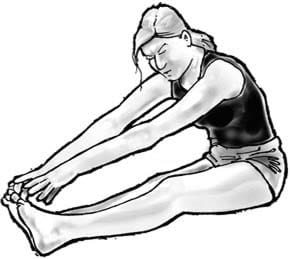Садржај
- Why stretch
- 1. Gives faster recovery
- 2. Adds the accuracy of the exercise technique
- 3. Adds flexibility and training to joints and ligaments
- Stretching recommendations
- Basic rules for stretching
- 1. Only statics. It is important to avoid jerking.
- 2. The optimal time is 10-20 seconds.
- 3. Slight pain is acceptable.
- 4. Дисање.
Who works well? Anyone who has a good rest!
Surprisingly, it is stretching that accelerates muscle growth! It is stretching that allows you to improve the technique of performing the exercise. And it is stretching that makes post-workout muscle pain easier to cope with. Now for the details.
According to dictionaries, textbooks and Wikipedia, “stretching is a type of physical exercise aimed at increasing the flexibility of the human body.”
Now let’s answer the question: why do we need stretching?
Why stretch
1. Gives faster recovery
During the training of any strength discipline, the athlete’s task is to contract the muscles and make them work. Muscles contract, their length decreases, and their volume increases. The muscle is in tension. And then the athlete goes to rest, bypassing the stretching. Drinks all kinds of supplements for better muscle recovery and nutrition. But no matter what the athlete drinks, no matter how he rests, the muscle will not begin to recover until it returns to its original length!
Stretching contributes to this. After pumping the muscles, it is important to stretch them or, in other words, return them to their original length. Only by regaining length can the muscles relax, absorb the necessary supplements and rest.
2. Adds the accuracy of the exercise technique
To pump up the desired body part, it is necessary to perform the exercises technically correctly. And often the features of the body simply do not allow it to be done precisely because of the lack of stretching. The most common problems are:
- in the squat: does not allow to sink deeply;
- in the deadlift: it is important to stretch the hamstrings in order to bend lower with a straight back;
- in the bench press: it is important to stretch the shoulders, thoracic spine for the correct range of motion.
3. Adds flexibility and training to joints and ligaments
Have you noticed how the security forces move? They are distinguished by a bearish, waddling gait. Did you know that they cannot, for example, make a wave of their hand so that the hand goes past the ear? Muscles don’t. By constant loads aimed at contraction and increase in volume without stretching, the muscles turn into “lumps”. Visually, athletes achieve this, but their muscles are not able to stretch from a “lump” to their original length. Thus, they hinder movement, do not allow to take a step longer, raise your hand higher. Even running away in case of danger will be very difficult for them.
Accordingly, the joints and ligaments are also not trained. Joint mobility, ligament elasticity decreases. They, too, can no longer perform the movements characteristic of a person who trains fully. And in the case of a sharp, unusual movement, they simply may not withstand the unusual load.
Stretching recommendations
Follow these guidelines for stretching:
- Use stretching as a warm-up. This is not a typo! Stretching is important to add to the warm-up immediately after cardio. Well-stretched muscles will allow you to perform more precisely the desired exercise and will allow you to spend less time on warm-up sets.
- Stretch after exercise. Mandatory muscle relaxation to restore their original length.
- Stretch daily. Daily stretching for the necessary muscle groups allows you to subsequently have the correct exercise technique.
Basic rules for stretching
There are the following basic rules for stretching:
1. Only statics. It is important to avoid jerking.
What happens when you jerk? The muscles after the power load contracted as much as possible and then with jerks you begin to straighten them. Microcracks appear. These are kind of micro-wounds, which also delay the process of muscle recovery.
2. The optimal time is 10-20 seconds.
Stretching is a long and smooth process. Muscles do not lend themselves to stretching right away. In a stretched position, you need to be 10-20 seconds for effective stretching, during which time the muscle smoothly increases its length, is fixed at this length and gets used to it. After exhalation, it is necessary to smoothly stretch even more.
3. Slight pain is acceptable.
You need to stretch until the muscle “allows” to stretch. The stop signal is the appearance of mild pain. Of course, in many sports disciplines, athletes endure severe pain when stretching, but the Calorizator site is, first of all, a site aimed at health, and severe pain is unacceptable for health.
4. Дисање.
Stretching is, first of all, calming the body after suffering stress. The brain must instruct the muscles to “rest and repair”. Breathing should be deep and calm. The increase in the stretch angle should take place as you exhale.
It is not at all necessary to strive for splits, it is not at all necessary to strive for bridges and complex acrobatic elements. First of all, you need to strive to calm your muscles, strengthen joints and ligaments, normalize your heart rate and allow your body to rest. And then the achievement of the result will be more tangible, and healthier.










